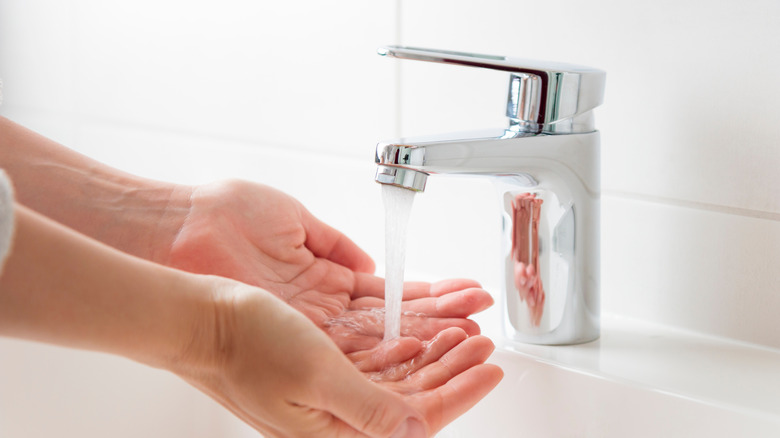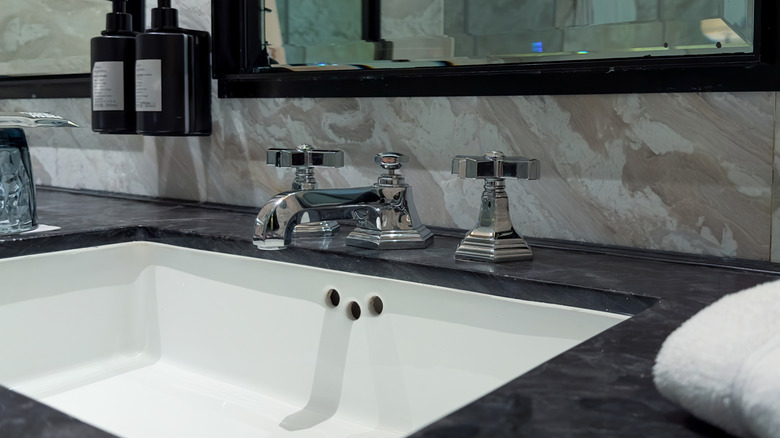How To Make Sure This Budget-Friendly Plumbing Dupe Is Safe To Use In Your Home
Choosing the right faucets for your kitchen or bathroom is never easy. Whether you shop online or in store, you'll find hundreds of different styles and colors. You'll want to think about whether you should go for something traditional or sleek and modern. Is chrome a safe bet? Have you considered the pros and cons of installing gold faucets? Then there's the cost. It's not difficult to spend hundreds of dollars on models from the leading brands.
So while professional designers say this is a must-have feature you really should splurge on, it's no surprise that dupes (or knockoffs) are both common and popular. If you can get something that looks like a faucet from Delta, Kohler, Moen, or one of the other top faucet brands at a fraction of the cost, what's the problem? Well actually, you could be putting the health of your family at serious risk. The U.S. Consumer Product Safety Commission (CPSC) has released a warning to immediately stop using certain Chinese-made faucets sold through Amazon. The problem is they contain excess lead. It can leach into your water and is particularly dangerous for children and pregnant women. According to one source, over 100,000 units are affected. If you believe you might have bought these, check here.
Does this mean all budget-friendly dupes should be avoided? No. Those made to American safety standards will be perfectly safe. How can you make sure? You need to check for the proper certification and labeling. Let's investigate.
What are the U.S. safety standards for plumbing fittings like faucets?
In the U.S., the Safe Drinking Water Act covers all pipes, fixtures, fittings, and even the flux and solder used for making connections. Each of these products needs to meet certain standards, and there are 8 independent certification bodies that are accredited by the American National Standards Institute (ANSI) to carry out testing. This can understandably get confusing, but the following should help clarify.
The main certification is NSF/ANSI/CAN 61, which is the key safety standard for safe drinking water and should be marked somewhere on the product packaging. This certification includes NSF/ANSI 372, which means the lead content is 0.25% or less. The testing authority should also be marked. A full list of the 8 accredited bodies is available here.
Whether your faucet is the real thing or an imported dupe, these details must be present for it to be considered safe for use in your home. Simply stating that it has less than 0.25% lead is not good enough. There are several ways to help cut the cost of your bathroom remodel or kitchen refurb, but buying uncertified plumbing fixtures is definitely not one of them.

